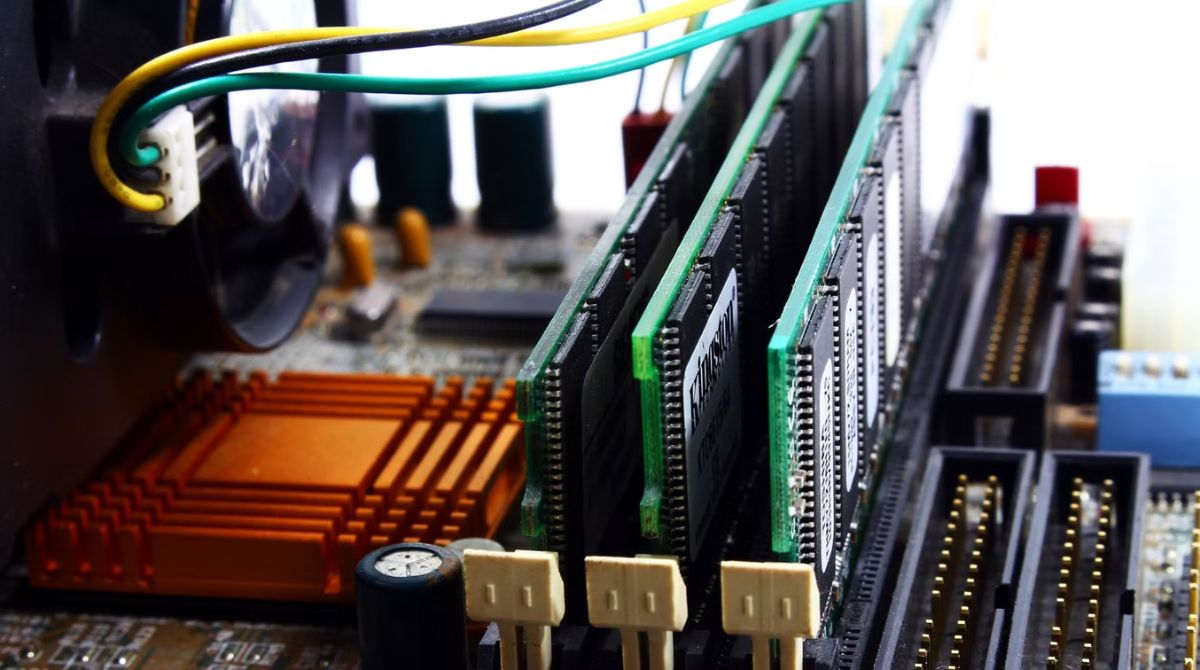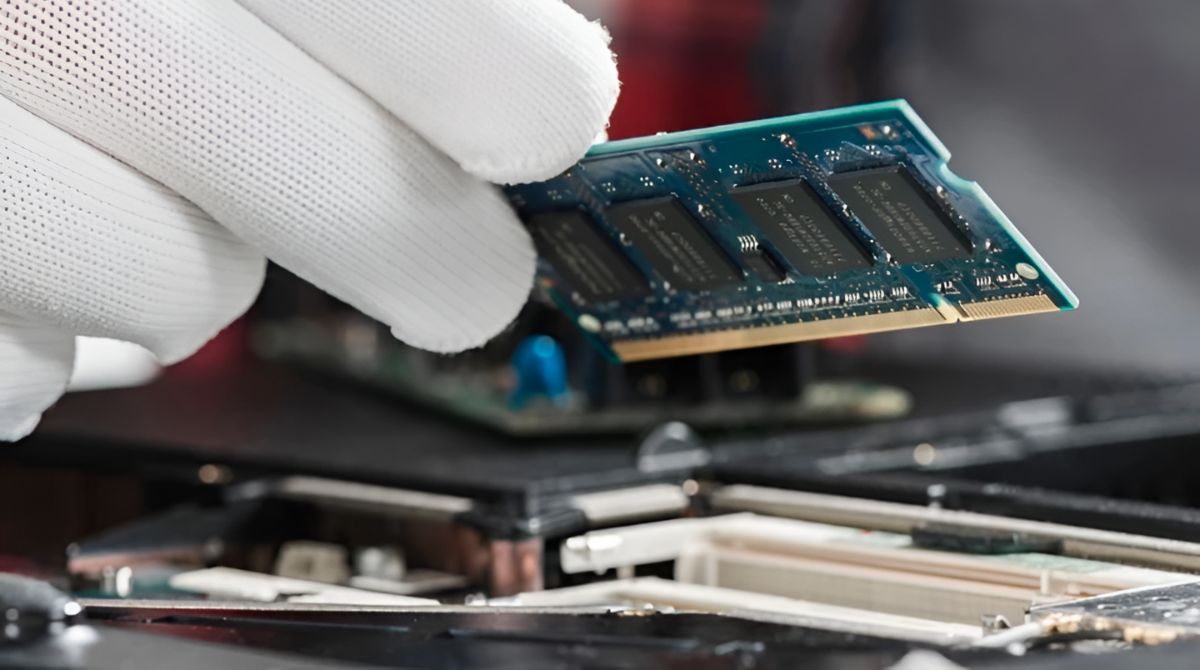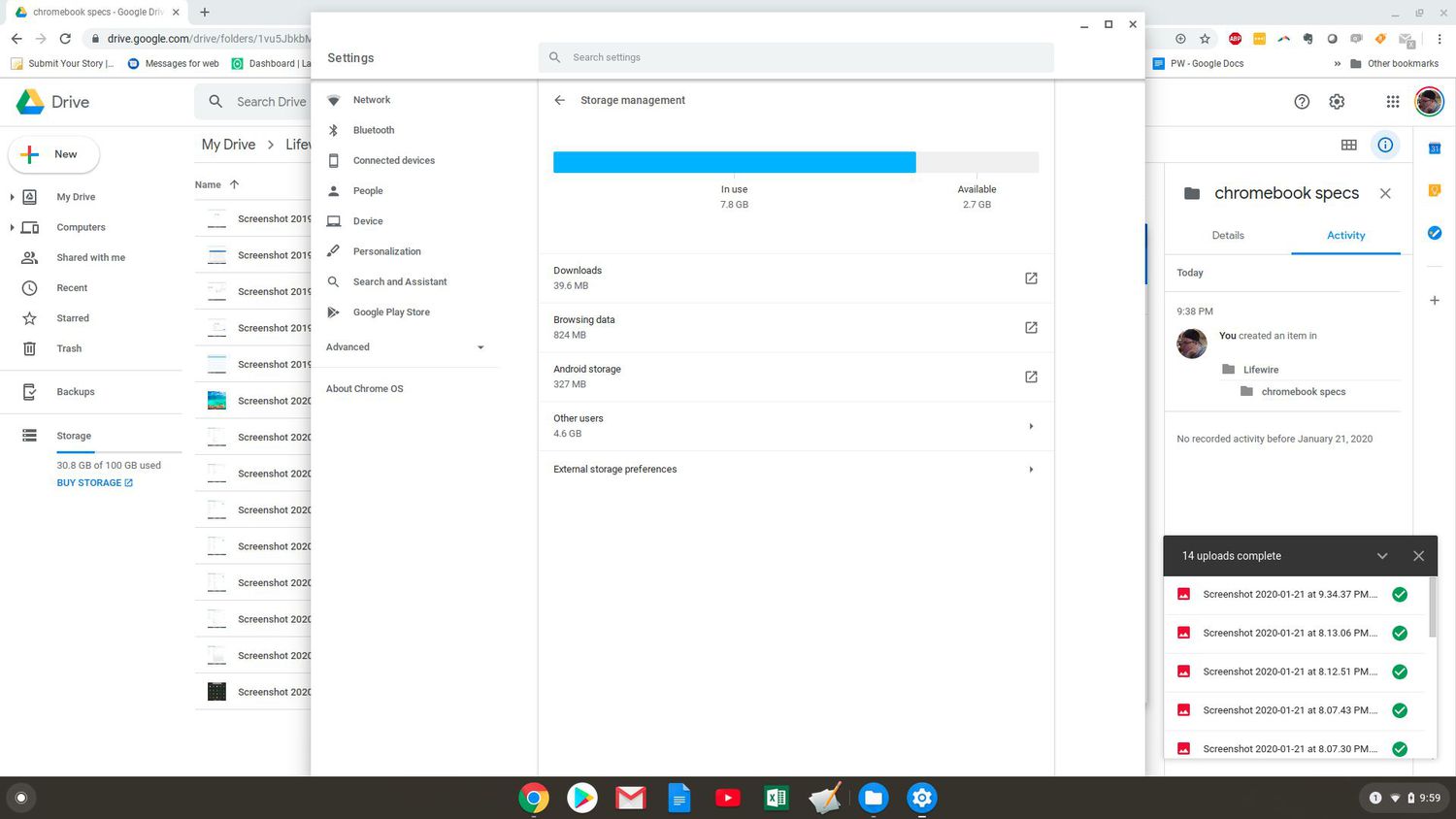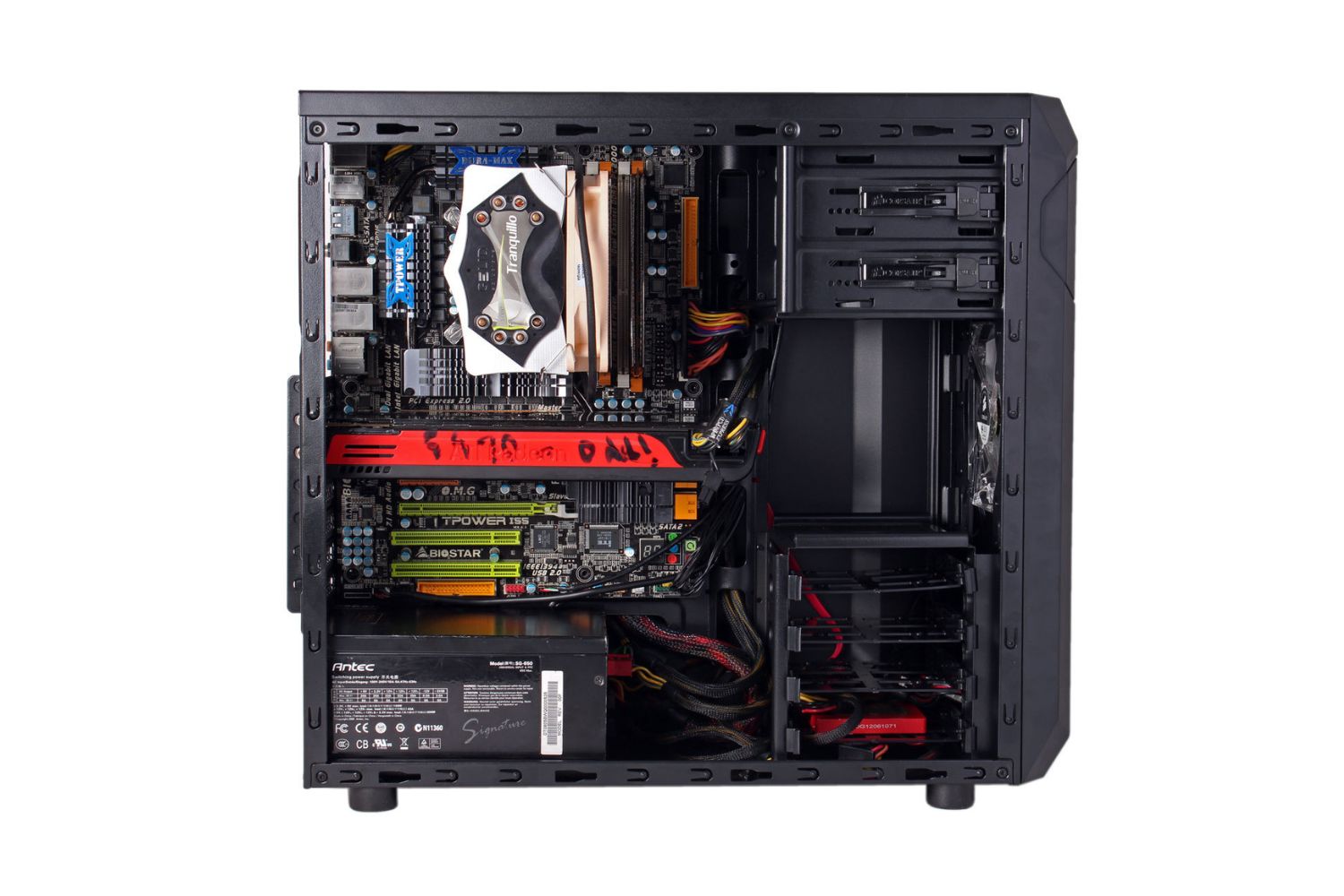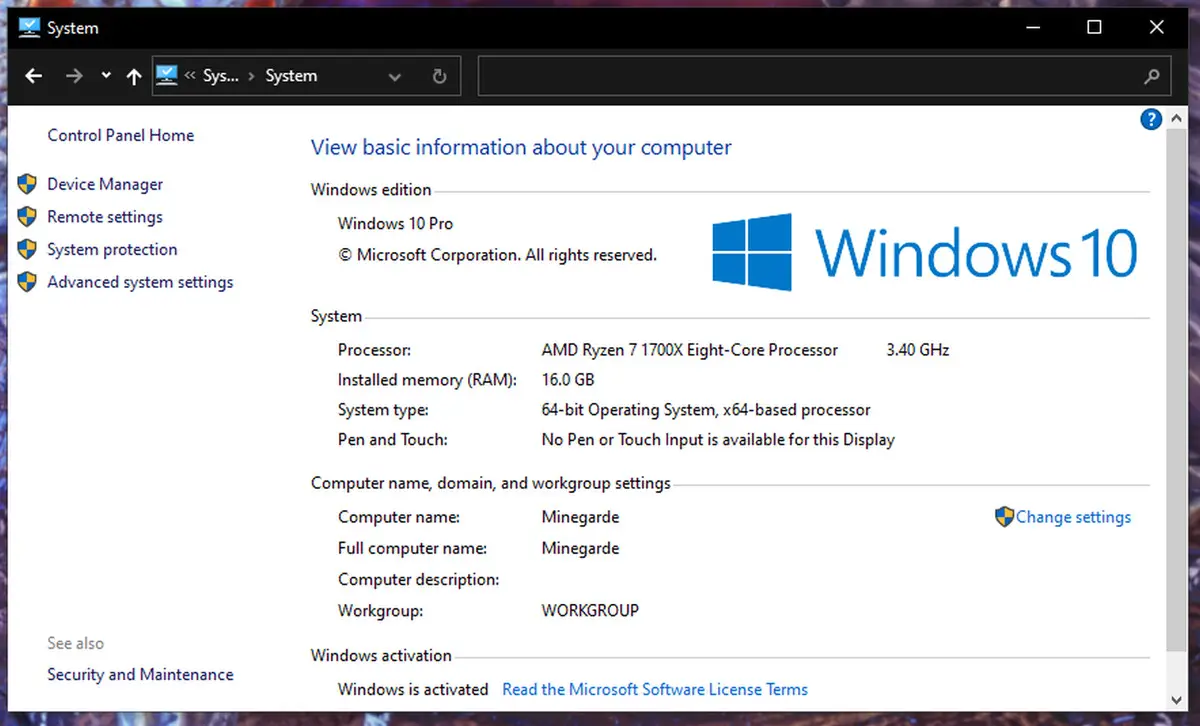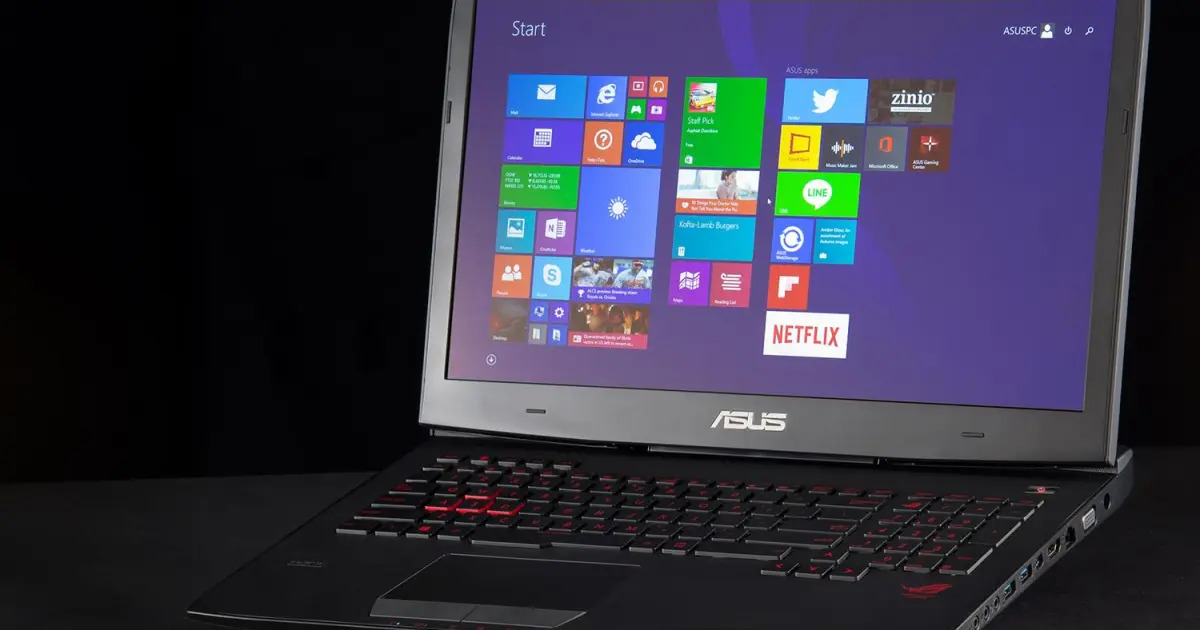Introduction
Welcome to our guide on how to check RAM specs! If you’re a computer enthusiast or someone who wants to upgrade or troubleshoot their system, understanding your computer’s RAM specifications is essential. RAM, which stands for Random Access Memory, is a critical component that determines how well your computer performs.
RAM stores and processes data that your computer needs to run various applications and programs. By knowing your RAM specs, such as capacity, speed, and type, you can make informed decisions about upgrading or replacing your RAM modules.
In this guide, we will walk you through the process of checking RAM specs on different operating systems, including Windows, Mac, and Linux. We’ll also introduce you to some useful tools that can assist you in checking and monitoring your RAM performance.
Whether you’re a beginner or a seasoned computer user, understanding your RAM’s capabilities will empower you to optimize your system’s performance and troubleshoot any issues that may arise.
So, let’s dive in and discover how to check your RAM specs!
Why it’s important to check RAM specs
Checking your RAM specs is crucial for several reasons. Here are some key points highlighting the importance of understanding your computer’s RAM specifications:
1. System Performance:
RAM plays a vital role in determining your system’s performance. Insufficient RAM can lead to sluggishness, slow boot times, and overall reduced efficiency. By checking your RAM specs, you can identify if your current RAM capacity is sufficient or if an upgrade is required to meet the demands of modern applications and multitasking.
2. Compatibility:
Each computer has specific requirements when it comes to RAM type, speed, and capacity. By checking your RAM specs, you ensure that any new RAM modules you purchase are compatible with your system. This helps prevent compatibility issues and ensures that the new RAM modules can be seamlessly integrated into your computer.
3. Upgrading Options:
Understanding your RAM specifications allows you to explore potential upgrade options. By knowing the maximum RAM capacity supported by your system, you can identify if you have room for expansion. Upgrading your RAM can significantly boost your system’s performance, especially for resource-intensive tasks like gaming, video editing, or running virtual machines.
4. Troubleshooting:
In case your computer encounters frequent crashes, freezes, or errors, checking your RAM specs can help identify if faulty or incompatible RAM is the culprit. By investigating the specifications, you can determine if the RAM is a potential cause and take appropriate steps to resolve the issue, such as replacing or reseating the RAM modules.
5. Overclocking Potential:
If you’re interested in overclocking your system for enhanced performance, understanding your RAM specs is essential. Overclocking refers to running your RAM at speeds higher than the manufacturer’s specified limit. By checking the RAM specifications, you can determine if your RAM modules are capable of handling overclocking and adjust settings accordingly.
Overall, checking your RAM specs is vital for optimizing your system’s performance, ensuring compatibility, exploring upgrade possibilities, troubleshooting issues, and even considering overclocking. By being aware of your RAM’s capabilities, you can make informed decisions that align with your computer usage needs.
Checking RAM specs on a Windows PC
If you’re using a Windows PC, there are several ways to check your RAM specifications. Here are three methods you can use:
1. Task Manager:
The Task Manager is a built-in utility in Windows that provides an overview of your computer’s performance, including RAM usage. To check your RAM specs using Task Manager, simply right-click on the taskbar and select “Task Manager.” Once the Task Manager window opens, go to the “Performance” tab. Here, you will find real-time information about your RAM usage, including capacity and speed. By clicking on the “Memory” option, you can view more detailed information about each RAM module installed in your system.
2. System Information:
Another way to check your RAM specs is by using the System Information tool. To access this tool, press the Windows key + R to open the Run dialog box. Type “msinfo32” and press Enter. The System Information window will open, displaying various details about your computer’s hardware and software. Under the “System Summary” section, you will find information about your total physical memory (RAM) capacity and other relevant details like the RAM manufacturer, speed, and type.
3. Third-Party Software:
If you prefer a more detailed and comprehensive view of your RAM specifications, you can use third-party software tools like CPU-Z or Speccy. These tools provide in-depth information about your RAM modules, including capacity, speed, timings, and manufacturer details. Simply download and install the software of your choice, and it will automatically detect and display your RAM specifications.
Remember to validate that the software you choose to download is from a trusted source to ensure the safety of your computer.
By using one of these methods, you can easily check your RAM specifications on a Windows PC. Understanding your RAM specs will help you make informed decisions when it comes to upgrading, troubleshooting, or optimizing your computer’s performance.
Checking RAM specs on a Mac
If you’re using a Mac computer, you can easily find your RAM specifications by following these steps:
1. About This Mac:
The simplest way to view your RAM specs on a Mac is through the “About This Mac” window. To access it, click on the Apple menu icon in the top-left corner of the screen and select “About This Mac.” A new window will open, displaying an overview of your Mac’s hardware. Click on the “Memory” tab, and you will see information about your RAM, including the total capacity and the type of RAM installed.
2. System Profiler:
The System Profiler, also known as System Information, provides detailed information about the hardware and software on a Mac. To access it, click on the Apple menu icon, select “About This Mac,” and then click on the “System Report” button. Once the System Profiler window opens, click on “Memory” in the sidebar. Here, you will find comprehensive details about your RAM modules, including capacity, speed, and type.
3. Terminal:
For advanced users, you can also use the Terminal to check your RAM specifications on a Mac. Launch the Terminal application from the Utilities folder or by using Spotlight search. Once the Terminal window opens, type the following command and press Enter:
sysctl -n hw.memsize
This command will display the total physical memory (RAM) capacity in bytes. To convert the value to a more readable format, you can divide it by 1,073,741,824 to get the capacity in gigabytes (GB).
By following these steps, you can quickly check your RAM specifications on a Mac. Understanding your RAM specs will enable you to make informed decisions when it comes to upgrading or troubleshooting your Mac’s performance.
Checking RAM specs on a Linux computer
If you are using a Linux-based operating system, there are several methods you can employ to check your RAM specifications. Here are three common ways to do so:
1. Terminal Commands:
Linux provides various terminal commands to retrieve information about your system’s hardware. One of the commonly used commands to check RAM specs is sudo dmidecode --type 17. Running this command in the terminal will display detailed information about your RAM modules, including capacity, speed, type, and other relevant details.
Another useful command is cat /proc/meminfo. This command provides a more general overview of your system’s memory, including the total memory available, free memory, and memory usage.
2. System Monitor:
Many Linux distributions come with a system monitor tool that provides a graphical representation of your system’s performance, including memory usage. The system monitor typically displays real-time data about your RAM usage, showing the total capacity, used memory, and available memory. You can access the system monitor through the applications menu or by searching for it in the system’s settings.
3. GUI Tools:
Linux offers various graphical user interface (GUI) tools that provide detailed information about your system’s hardware. One such tool is Hardinfo, which can be installed from the package manager of your Linux distribution. After installing Hardinfo, you can launch the application and navigate to “Devices” > “Memory” to view detailed information about your RAM modules, including capacity, speed, and type.
Another popular GUI tool is inxi, which can be installed from the command line using sudo apt install inxi. Once installed, you can simply run the command inxi -m in the terminal, and it will provide a comprehensive summary of your RAM specifications.
By utilizing these methods, you can easily check the RAM specifications on your Linux computer. With a clear understanding of your RAM specs, you can make informed decisions when it comes to troubleshooting issues or upgrading your system’s memory.
Tools to Help Check RAM Specs
When it comes to checking your RAM specifications, several tools can simplify the process and provide detailed information. Here are some popular tools that can help you:
1. CPU-Z:
CPU-Z is a widely used utility that provides comprehensive information about your computer’s hardware, including RAM specifications. It displays details such as RAM capacity, speed, timings, and manufacturer. CPU-Z is available for both Windows and Linux operating systems and can be downloaded for free from the official website.
2. Speccy:
Speccy is another valuable tool that provides a detailed analysis of your system’s hardware, including RAM specifications. It provides information about your RAM’s capacity, speed, type, and even the number of RAM slots utilized. Speccy is available for Windows and can be downloaded for free from the official website.
3. HWiNFO:
HWiNFO is a powerful system information tool that offers extensive hardware monitoring capabilities. It provides detailed information about your RAM modules, including capacity, speed, timings, and voltages. HWiNFO is compatible with Windows and can be downloaded for free from the official website.
4. Crucial System Scanner:
If you’re looking for a hassle-free way to determine compatible RAM upgrades for your system, the Crucial System Scanner can come in handy. It is an online tool that scans your computer’s hardware and provides recommendations for compatible RAM modules based on your system’s specifications. Simply visit the Crucial website and run the scanner to get personalized RAM upgrade suggestions.
5. System Information (Mac):
On a Mac, the built-in System Information tool provides comprehensive details about your hardware, including RAM specifications. Accessible through the “About This Mac” window, System Information displays information such as RAM capacity, speed, type, and manufacturer.
These tools can greatly simplify the process of checking your RAM specifications, providing a convenient and detailed analysis of your computer’s memory. Whether you’re a Windows or Mac user, these tools will assist you in making informed decisions when it comes to upgrading, troubleshooting, or optimizing your system’s RAM performance.
Common RAM Specifications to Look For
When checking your RAM specifications, there are several key factors to consider. Understanding these specifications will help you make informed decisions when upgrading or troubleshooting your computer’s memory. Here are some common RAM specifications to look for:
1. Capacity:
RAM capacity determines the amount of memory that your computer can address and use at any given time. It is typically measured in gigabytes (GB) and ranges from a few gigabytes to several hundred gigabytes. Ensure that your system has sufficient RAM capacity to handle the demands of your software and tasks. Consider upgrading if you often experience performance issues or if you work with resource-intensive applications.
2. Speed (Frequency):
The speed of your RAM, also referred to as frequency, indicates how quickly data can be read from and written to the memory modules. It is measured in megahertz (MHz) or gigahertz (GHz). Higher RAM speeds can improve overall system performance, especially in tasks that involve heavy data processing, such as gaming or video editing. However, note that the RAM speed must be supported by your motherboard and other hardware components.
3. Type:
RAM comes in different types, such as DDR (Double Data Rate) and DDR4, which represent different generations of RAM technology. Ensure that your RAM type is compatible with your motherboard and other hardware components. Using an incompatible RAM type can lead to system instability or even prevent your computer from working altogether.
4. Timing:
RAM timing refers to a set of numbers that represent the latency or delay between various internal processes of the RAM module. The timing numbers include values such as CAS latency (CL) and other timings like tRCD, tRP, and tRAS. Lower timing values generally indicate faster and more responsive RAM performance, but the impact on real-world performance is often minimal. Unless you are engaged in high-performance computing or overclocking, timing specifications can be less crucial to consider.
5. Voltage:
RAM modules operate at specific voltages, usually specified in volts (V). Most modern RAM operates at around 1.2 volts (V), but some high-performance modules may require a higher voltage for optimal performance. It is important to check that your RAM modules are compatible with the voltage supported by your motherboard. Mismatched voltages can result in system instability or even damage to the RAM or other hardware components.
By understanding these common RAM specifications, you can make informed decisions regarding upgrades, compatibility, and troubleshooting. Consider consulting your motherboard manual or manufacturer’s website to determine the supported RAM specifications for your specific computer or motherboard model.
Troubleshooting Common RAM Issues
RAM issues can sometimes cause various problems in a computer system. Understanding how to troubleshoot common RAM issues can help resolve these problems effectively. Here are some common RAM issues and their troubleshooting steps:
1. System Crashes and Freezes:
If your computer frequently crashes or freezes, faulty RAM could be the culprit. To troubleshoot this issue, try removing and reseating the RAM modules. Ensure they are properly inserted into the slots and securely locked in place. If the issue persists, you can test the RAM modules individually by removing one at a time and checking if the problem still occurs. If a specific RAM module is causing the issue, it may need to be replaced.
2. Blue Screen of Death (BSOD) Errors:
A blue screen error is a common symptom of RAM-related issues. To troubleshoot this problem, you can try running a memory diagnostic test. Most operating systems have built-in memory diagnostic tools that can help identify any memory-related problems. Additionally, you can use third-party software like MemTest86 or Windows Memory Diagnostic to perform more comprehensive memory tests. If errors are detected during the test, it indicates faulty RAM that may need to be replaced.
3. System Sluggishness and Slow Performance:
If your computer is experiencing sluggishness or slow performance, it could be due to insufficient RAM. Check the RAM usage in your task manager or system monitor to determine if your RAM is being fully utilized. You can also identify if additional RAM capacity is required by monitoring page file usage. If your RAM is consistently close to maximum capacity or if the page file usage is high, consider upgrading your RAM to improve system performance.
4. Incompatibility Issues:
If you have recently upgraded or replaced your RAM modules and are experiencing compatibility issues, ensure that the new RAM is compatible with your motherboard and other hardware components. Check the RAM specifications, including type, speed, and voltage, to verify compatibility. If the RAM is incompatible, you may need to reinstall the old RAM or purchase compatible modules.
5. Overclocking Stability:
If you have overclocked your RAM for enhanced performance and notice system instability, it could be a result of unstable overclock settings. Consider reducing the overclock or returning to default settings to see if stability improves. Finding a stable balance between performance and stability is essential when overclocking RAM.
By following these troubleshooting steps, you can diagnose and resolve common RAM issues effectively. However, if you’re unsure or need further assistance, consulting a professional or reaching out to technical support can provide additional guidance for diagnosing and resolving RAM-related problems.
Conclusion
Checking your RAM specs is an essential task for anyone who wants to optimize their computer’s performance, troubleshoot issues, or upgrade their system. By understanding the capacity, speed, type, and other specifications of your RAM, you can make informed decisions that align with your computing needs.
In this guide, we explored various methods for checking RAM specs on different operating systems, including Windows, Mac, and Linux. We also highlighted some useful tools that can simplify the process and provide detailed information about your RAM modules.
Understanding common RAM specifications such as capacity, speed, type, timing, and voltage can help you make informed decisions when upgrading your RAM, troubleshooting issues, or optimizing your system’s performance. It can also assist in identifying potential compatibility problems and ensuring a stable and efficient computing experience.
Remember, if you experience frequent crashes, freezes, slow performance, or other issues, consider checking your RAM as it may be the underlying cause. Troubleshooting RAM issues involves reseating the modules, running memory diagnostic tests, monitoring usage, and identifying compatibility problems.
By following the guidelines and tips provided in this guide, you’ll have the knowledge and tools necessary to check your RAM specifications effectively. This knowledge will empower you to make informed decisions about upgrading RAM, optimizing system performance, and resolving any RAM-related problems that may arise.
Now that you have the necessary information, go ahead and check your RAM specs. Unlock the full potential of your computer’s performance by ensuring you have the right RAM for your needs.







